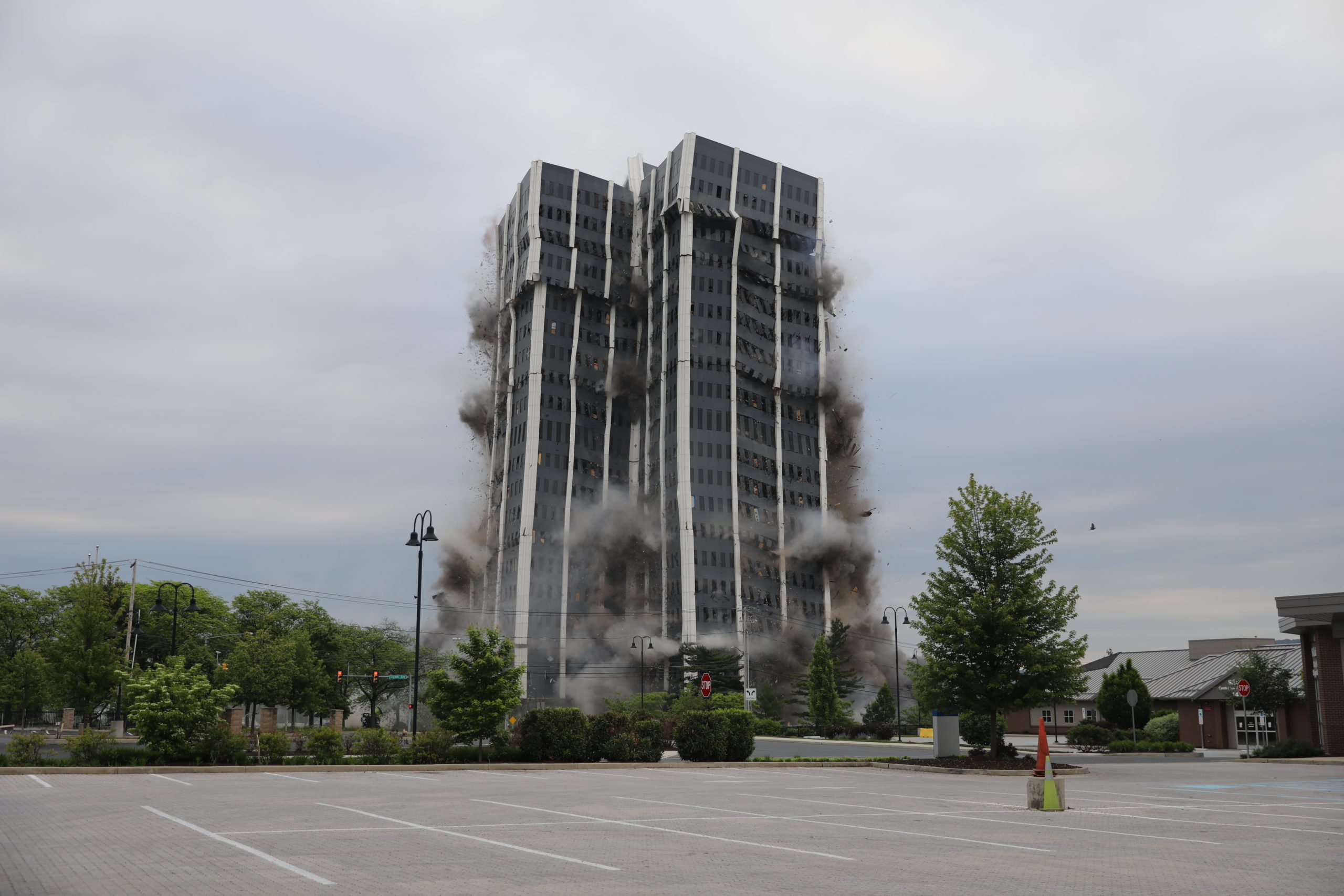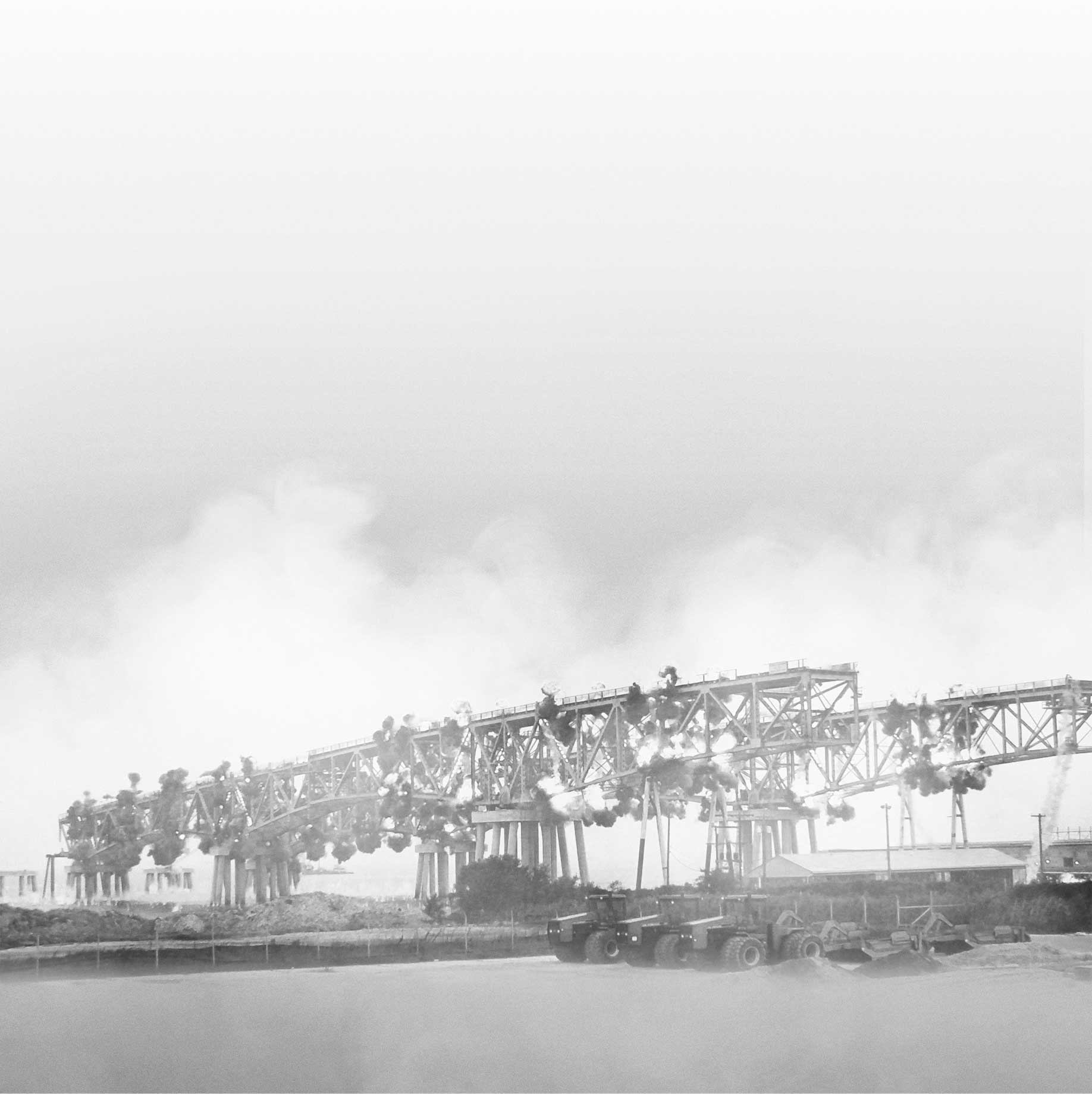Watching buildings fall on the Strip another excuse to party
By John Przybys for the Las Vegas Review-Journal June 12, 2016
For original article, please click here.
New Year’s Eve? Meh. National Finals Rodeo? Pffft. The Consumer Electronics Show? Whatever.
But an iconic Strip casino crashing down on itself with dust blowing everywhere and hard-partying revelers who’ve stayed up half the night cheering lustily as they watch?
Now that’s Las Vegas.
Part Woodstock, part Burning Man, part kids’ birthday party at Chuck E. Cheese, Las Vegas casino implosions are a form of targeted destruction embraced more enthusiastically here than maybe anyplace else. And, at 2 a.m. Tuesday, the latest chapter in Las Vegas’ continuing chronicles of corporate dusty death is scheduled to take place when the Riviera comes down after a 60-year run.
Tuesday’s implosion is just the first of a two-parter — the rest of the Riviera is scheduled to come down in August — and the crowd that gathers to watch probably will include veterans of any of the more than a dozen Strip implosions that have taken place since Las Vegans’ favorite outdoor pastime kicked off during the 1990s.
This time around, in an atypical twist, the Barrymore, right across the street and inside the Royal Resort, 99 Convention Center Drive, has scheduled a viewing party Tuesday from midnight to 3 a.m. Kirk Perry, the Barrymore’s general manager, is amazed at how quickly reservations for the event disappeared
“Our cap on this was about 100 people and we sold out in probably the first eight hours,” Perry says. “It’s unbelievable. I think if I had 500 to 600 seats available, they’d go.”
Among the Barrymore’s guests will be a tourist from the United Kingdom and a group of visitors from Brazil who, Perry says, “actually will stay at the Royal Resort specifically to watch.”
Perry — who, himself, has witnessed a few Strip casino implosions — suspects the events are so popular because here, in Las Vegas, “we have the ability to change our landscape, the look and feel of the city.”
Watching an iconic casino fall to the ground in a cloud of dust offers, perhaps, a tangible reminder of the city’s continual evolution, he says.
More to the point, a casino implosion is “like an Irish wake,” Perry says. “How can you not celebrate the life and glory (of the Riviera), especially here in Las Vegas? We like to party and we like to celebrate, so, again, even with the passing of something, it’s celebrating history but also, at the same time, of the future to come.”
But Strip casino implosions haven’t always been the mega-events that the best of them are today. Mark Hall-Patton, Clark County museums administrator, traces the modern Las Vegas Strip implosion — the showbizzy excuse for a party that we’ve all come to expect — to the downing of the Dunes in 1993.
“That one had, if you remember, shooting from the pirate ship and that sort of thing,” Hall-Patton says. “It was that whole sense of, ‘We can make an event out of this, where nobody can outdo our event.’
“That kind of set the tone for what we could do,” Hall-Patton says.
“I think once Steve Wynn did the Dunes implosion, he showed that a party could be had and you could take something that’s fairly standard — “OK, we’ve gotta get rid of this old building” — and turn it into a Vegas event.”
Hall-Patton even would consider as a progenitor of the modern-day Strip implosion the above-ground atomic bomb tests of the postwar era, when, he says, “people would come from all over the country to watch nuclear devices being set off.”
“You went to see this and there was just this sense of power, a sense of, this is something you’re never going to see and hopefully you’re never going to see in any other setting than that,” Hall-Patton says.
“We think of buildings as permanent, huge structures. And the fact that we can take them down in a few minutes, where it takes months or years to build them up, is really just sort of a fascinating statement on what kinds of destructive power we have.”
Another appeal of a casino implosion could be in the communal ritual it represents, says Michael Ian Borer, an associate professor of sociology at the University of Nevada, Las Vegas.
In fact, it’s not coincidental that it’s implosions of casinos on the Strip, and not implosions of office buildings in Henderson, that make Las Vegans camp out all night. Those, Borer says, happen on the Strip because “like it or not, we are the Strip.”
“Of course, we are much more than the Strip,” Borer continues, but all of us “seem to develop some relationship to the Strip.”
We work on the Strip or visit it. We drive across it, or drive on it, or try to avoid it completely. And it’s the only street in town that visitors want to see when they visit us.
The Strip is, “for better or worse, the beacon of light that glows right in the middle of the valley,” Borer says, and “the dominant character that dominates so many of the narratives that take place here.”
That makes anything that happens on the Strip important to all of us, Borer says, and that includes paying our respects to mourn or celebrate the death and imminent disappearance of one of the casinos along it. And, in doing so, and in sharing our personal and collective stories about that, we build a sense of community.
“One of the problems that people have within Las Vegas is that we don’t have many opportunities for collective rituals, and this is clearly one of them,” Borer says.
“It’s this collective desire to participate in something together where we can identify as Las Vegans. There is this desire, this need, for collective ritual.”
The irony, Borer says, is that “by destroying something, we create something else — certainly, that identity, that sense of belonging. Most importantly, by destroying (a hotel), we’re actually creating a sense of place. A person may not have a slew of memories of the Riviera, but they’ll have this one now and that will create some connection to Las Vegas.”
Now, all of this makes sense and certainly rings true. But don’t forget another reason why casino implosions are so popular.
Stuff. Blowed. Up.
There is “a certain fascination” with watching a building collapse, Hall-Patton says. The problem is that building collapses in real life usually involve horrible consequences.
“We don’t like hearing about earthquakes when buildings collapse and hundreds are killed,” he says. “That’s a terrible tragedy.”
In contrast, watching a casino implosion allows us to experience the primal, even childlike excitement of watching a building fall down without the risk of real-life consequences to either others or ourselves.
Besides, how cool is it to watch a spectacle that comes to us without special effects, computer-generated imagery or having to watch Stallone or Schwarzenegger? And if anybody’s going to pull off a magic trick that’d make anything any Strip magician ever has done pale by comparison, why wouldn’t it be Las Vegas?
“I grew up in the Midwest and I was used to seeing old corn silos come down,” says Jeremy Handel, a spokesman for the Las Vegas Convention and Visitors Authority. “I think there is intrigue in the precision to it and just the engineering behind it. You think, ‘How are they going to make that land in a little spot?’ “
A casino implosion “can be a performance,” Hall-Patton says, “and who does performance better than Las Vegas?”
So count casino implosions as — like inexpensive eats, vaudeville-type shows and gratuitous nudity — something that Las Vegas didn’t invent but certainly helped to perfect.
“People blow up buildings all over the world,” Hall-Patton says. “But the whole idea of putting it into a party? That’s a Vegas thing.”



